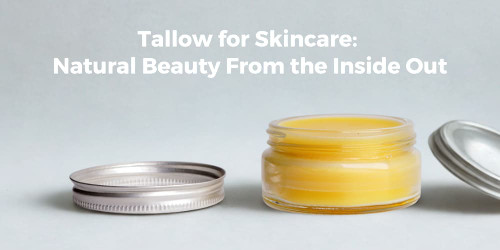Introduction
Ear syringing, also known as ear irrigation, is a method used to remove earwax buildup from the ear canal. While it was once a common practice performed by doctors, ear syringing has become less popular in clinical settings due to potential risks. However, some people still choose to use ear syringes at home for self-treatment. This guide provides you with medically accurate information on how to use an ear syringe safely and effectively, based on guidelines and recommendations from Australian health authorities.
Why Don't Doctors Syringe Ears Anymore?
According to the Australian Government's Department of Health (July 2023), many doctors have stopped performing ear syringing due to the risk of complications such as ear infections, perforated eardrums, and damage to the ear canal. These risks have led to the recommendation of alternative methods, like ear microsuction, which is considered safer and more effective.
How Painful is Ear Syringing?
The pain experienced during ear syringing can vary depending on several factors, including the amount of earwax buildup and the sensitivity of the individual's ear canal. According to a study published in the Journal of Otolaryngology - Head & Neck Surgery (June 2023), most people experience mild discomfort rather than significant pain during ear syringing. However, if the procedure is not done correctly, it can cause pain and even injury to the ear.
If Doctors No Longer Practice Ear Syringing, Why Do People Still Use It?
Despite the potential risks, some people prefer to use ear syringes at home because they are inexpensive and accessible. The Australian Society of Otolaryngology (May 2023) notes that ear syringing kits are available over the counter at pharmacies, and many individuals feel confident performing the procedure themselves after receiving proper instructions.
What Circumstances Will You Need to Use Ear Syringing?
You might consider using an ear syringe at home if you experience symptoms of earwax buildup, such as:
- Hearing loss: Earwax can block the ear canal, leading to temporary hearing loss.
- Ear discomfort: A feeling of fullness or pressure in the ear.
- Ringing in the ears (tinnitus): Excessive earwax can sometimes cause tinnitus.
- Ear infections: If earwax traps water in the ear, it may increase the risk of infection.
Before using an ear syringe, it's essential to consult a healthcare professional to ensure it's the right choice for your situation. The National Health and Medical Research Council of Australia (July 2023) recommends considering other options first, such as using ear drops or visiting a healthcare provider for professional removal.
How Do You Flush Your Ears at Home?
To safely flush your ears at home using an ear syringe, follow these steps recommended by the Australian Government's Better Health Channel (June 2023):
1. Soften the earwax: Use ear drops containing hydrogen peroxide or saline solution for a few days before syringing.
2. Prepare the syringe: Fill the syringe with lukewarm water. Avoid using cold or hot water as it can cause dizziness.
3. Position yourself: Tilt your head to the side, with the affected ear facing upward.
4. Insert the syringe: Gently insert the tip of the syringe into the ear canal without pushing too far.
5. Flush the ear: Squeeze the syringe to release the water into the ear canal. Allow the water to sit for a few moments before tilting your head to let the water and wax drain out.
6. Dry your ear: After syringing, dry your ear with a clean towel or use a hairdryer on the lowest setting held at a safe distance.
Is Ear Suction Better Than Syringing?
Ear microsuction is often preferred over syringing by healthcare professionals. According to a report by the Royal Australian College of General Practitioners (July 2023), ear microsuction is safer and more effective because it involves using a gentle vacuum to remove earwax under direct vision, reducing the risk of damage to the ear canal or eardrum.
Additional Considerations and Alternatives
- Use of Ear Drops: If you prefer not to use an ear syringe, ear drops are a less invasive alternative for softening and naturally expelling earwax.
- When to See a Doctor: Seek medical attention if you experience persistent ear pain, discharge, or if ear syringing does not relieve your symptoms.
- Hydrogen Peroxide Ear Drops: Some ear drops contain hydrogen peroxide, which can help soften earwax. However, it's essential to follow the instructions carefully to avoid irritation or injury.
FAQs
Q: Can I use ear syringing if I have an ear infection?
A: No, ear syringing is not recommended if you have an active ear infection, a perforated eardrum, or any other ear-related condition. Always consult with a healthcare professional before using an ear syringe.
Q: How often should I use an ear syringe?
A: Ear syringing should only be done when necessary. Overuse can irritate the ear canal and lead to complications. If you frequently experience earwax buildup, consult a healthcare professional for advice.
Q: Is earwax harmful?
A: Earwax is a natural substance that helps protect the ear canal from dust, debris, and bacteria. It's only problematic when it builds up and causes symptoms like hearing loss or discomfort.
Q: Where can I buy an ear syringe in Australia?
A: Ear syringes can be purchased at most pharmacies and online health stores, including Medcart.
Disclaimer
This article is for informational purposes only and does not constitute medical advice. Always consult with a qualified healthcare professional before attempting any self-treatment for earwax removal. The information provided is based on current research and guidelines from Australian health authorities as of August 2024.
Conclusion
While ear syringing can be an effective way to remove earwax at home, it's essential to approach the process with caution. Understanding the risks and proper technique can help prevent complications. If you're unsure whether ear syringing is right for you, or if you experience any concerning symptoms, consult with a healthcare provider. For more information on ear care products, visit Medcart's Ear Syringe Collection.















